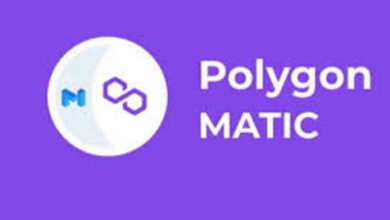Introducing a new system in your company is not an easy endeavor. You need to research vendors, undertake the sales process, bargain the cost and train your employees. You will figure out that the benefits of a CMMS system are worth it and help you save money and time, make health and safety efficient, and much more. In this article, we are going to look at how to implement a CMMS benefits the daily operations of your organisation.
Reducing downtime
1. Avert maintenance backlog
Maintenance backlog is inevitable but a high backlog level can greatly interfere with operations. The maintenance backlog cost can be very expensive. Therefore, it should be kept at a manageable level. One of the main functions of a CMMS system is balancing maintenance and resource costs so that backlog can be easily managed. It sends a notification on small maintenance issues which can otherwise be ignored giving room for maintenance task schedules.
2. Increases the equipment’s lifespan
Age is not usually the culprit for machine failure but one of the main reasons. It is expensive to replace old machinery with new ones making maintenance critical. To increase the lifespan of equipment maintenance should be done before the machine breaks down completely. This is achievable via integrating a CMMS system with MES systems, sensors, and PLC SCADA to enable you to track the operational condition of your asset in real-time and notice failure before it occurs.
3. Easy scheduling and completion of preventive maintenance
An advantage of preventive maintenance is resolving problems before they escalate into bigger ones. Preventive maintenance is very important in lowering downtime but you need to have the know-how of scheduling it more.
This problem is solved via automated work orders by CMMS software. Preventive maintenance schedules can be done based on condition, usage, and time via a CMMS system. As a result, a work order will be triggered which is then assigned.
4. Faster inspections and repairs
During inspection and repair of an asset, downtime is usually automatically triggered. This is unavoidable and if the preventive maintenance and repairs are not effective, downtime is prolonged. This causes lost time and production losses.
With a CMMS you will be able to easily inspect and repair machinery so that downtime is considerately reduced. Technicians can access the software from a mobile app in any location and access equipment diagrams, spare parts location, and history for repairs to be done faster. You can also quickly access work orders locate the defective part and repair it.
The cost of control
5. Accurately predict the parts required for maintenance
Lack of inventory control can lead to costly consequences. Overspending could cost you more than the purchase cost. Lacking the right machinery parts during breakdown leads to downtime and hasty shipping which are expensive.
Using a CMMS to manage your inventory enables you to buy, track and arrange machinery parts which will help you avert these costly issues. You can use tools such as inventory reporting, predicting parts using AI, and automated purchasing to help you make decisions based on real data.
6. Avert rework and scrap manufacturing
Rework and scrap put a big burden in form of waste, power, and production loss. It is also hard to make up for the expense without the employees working overtime. One method of reducing rework and scrap costs is keeping machinery well maintained through PM. Using a CMMS system enables maintenance technicians to plan, schedule, and perform repairs.
7. Monitor and track the cost of maintenance
A CMMS system monitors all functions related to finished work orders. It makes it easy to compile a report on the costs, see how the budget was executed, and make informed capital expenditure choices. If you need to figure out the maintenance value you can make a comparison of the planned and reactive maintenance costs.
8. Save on electricity
Any organization can cut operation costs by saving on energy. Properly maintained assets consume less energy and lower your overall energy costs. Reactive maintenance is the major culprit in energy loss since it causes rework, improper scheduling, inventory problems, etc.
A CMMS system can help you in making an effective preventive maintenance program with tools such as automated work orders and more effective work schedules.
Increase efficiency
9. Maintenance schedule optimization
Thoroughly planned maintenance schedules are fast, use minimal resources, and are cheap. You can make efficient plans when you have every aspect of maintenance at your fingertips such as asset requirements, production routines, and inventory.
You need to understand your equipment to make effective maintenance schedules. Using tools like MES systems, PLCs and sensors can assist you in capturing, monitoring, and analyzing data on the performance of machinery.
10. Work request automation
Normally, maintenance managers get work requests through sticky notes, phones, verbally, or via whiteboards. These are not effective since they cause teams to waste time making work orders and entering data.
Using CMMS software reduces this work via automating these processes. Workers can enter work requests, make PM triggers, or even make sensor connections to make work orders in real-time. Zero time is wasted tracking down operators or perusing through files.
Maintenance procedure standardization
You can use a tool that works well for a specific purpose for efficient maintenance. You can encounter more downtime and incur more costs if you start with each repair, preventive maintenance, or report.
CMMS software enables you to create more maintenance checklists, reporting templates, work schedules, and other tasks faster. These resources will also be digitally accessible for every worker to view the same data, follow the same guidelines and get work done faster.
Asset maintenance can make an individual lonely, frustrated, and seem challenging to reach individual or team objectives. Making a connection with other maintenance technicians is a sure way of navigating through these challenges. You are offered the opportunity of asking questions, exchanging ideas, solving problems, and lean from more experienced professionals.









